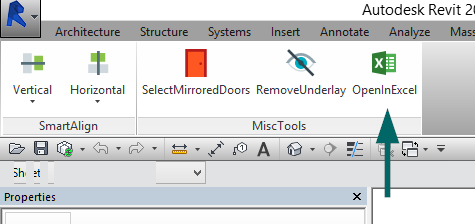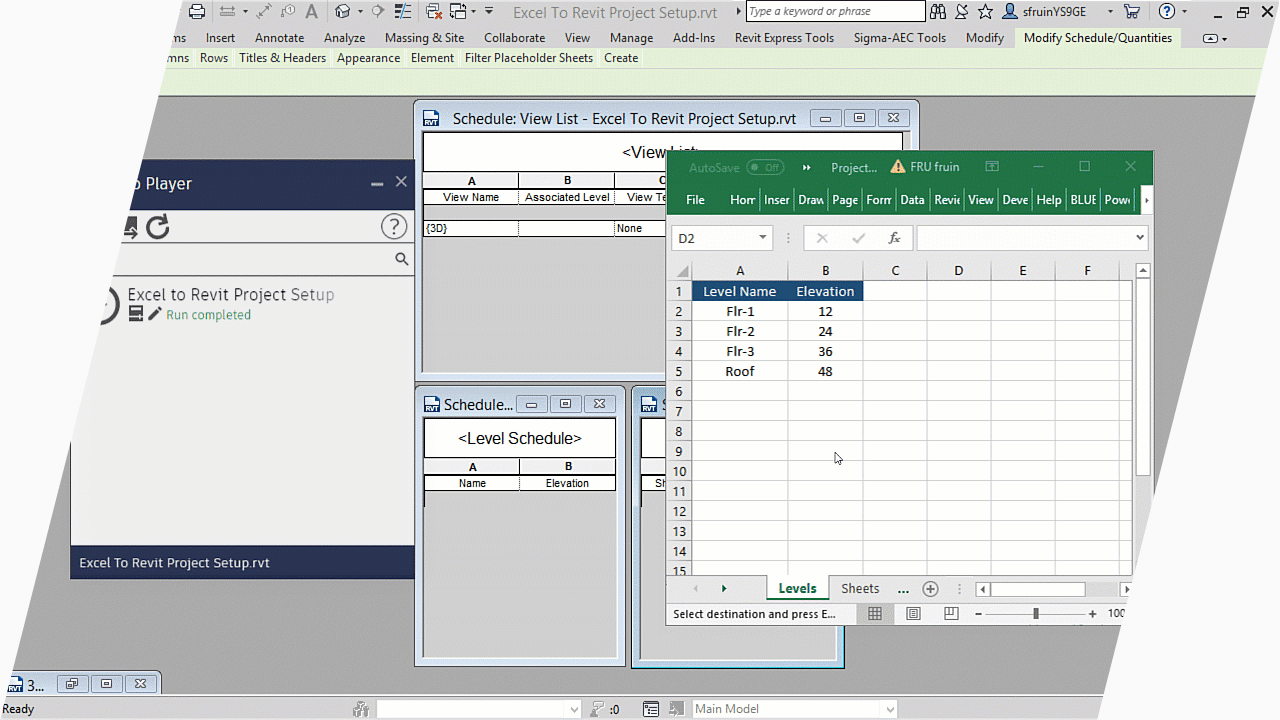Import Excel into Revit: Enhancing Your Workflow
Wiki Article
Revit Accelerator: Excel Assimilation Approaches for Boosting Efficiency and Collaboration
In this write-up, we will check out the benefits of incorporating Excel right into your Revit process. And also, we will certainly share best methods for flawlessly integrating Excel into your Revit tasks. Obtain all set to supercharge your Revit experience with our Revit Accelerator: Excel Combination Approaches!Benefits of Excel Combination in Revit
The advantages of Excel assimilation in Revit are many and can greatly boost productivity and partnership. By effortlessly connecting these 2 effective tools, you can streamline your process and conserve beneficial time. With Excel combination, you can conveniently import and export information between Revit and Excel, enabling you to take advantage of the strengths of both programs.
An additional advantage of Excel assimilation is the ability to create dynamic schedules and records. By linking your Revit design to an Excel spreadsheet, any kind of adjustments made in Revit will instantly update in the corresponding Excel data. This makes it simple to produce updated timetables, quantity departures, and various other job documents.
Excel combination in Revit also makes it possible for much better cooperation amongst team participants. With the capability to import and export information, you can quickly share information with colleagues that may not have access to Revit. This promotes reliable communication and permits far better sychronisation and decision-making.
Streamlining Workflows With Revit and Excel
Simplifying operations with Revit and Excel can significantly boost performance and partnership. By incorporating these 2 powerful tools, you can optimize your layout process and enhance interaction within your group. With Revit, you can develop 3D versions and create comprehensive building and design documentation. When it comes to information management and evaluation, Excel is the go-to software program. By integrating the capabilities of Revit and Excel, you can flawlessly transfer information in between the 2 applications, removing the need for hand-operated information entry and lowering the risk of mistakes.
Utilizing Revit and Excel together allows you to utilize the toughness of each program - revit plugins. You can export information from Revit into Excel, where you can execute complex calculations, create graphes and charts, and evaluate the details in an extra efficient and well organized fashion. On the other hand, you can import data from Excel right into Revit, enabling you to swiftly upgrade your designs and documents based upon modifications made in Excel
The combination of Revit and Excel additionally promotes cooperation amongst staff member. By sharing Excel data, you can quickly communicate and work together on design and construction-related information. This enhances control and makes certain that everyone is dealing with the most updated details.
Optimizing Collaboration With Excel and Revit
To take full advantage of partnership with Excel and Revit, you can perfectly share and update layout and construction-related information with your group. By integrating Excel with Revit, you can get rid of the demand for hands-on data access and reduce the danger of errors. With just a few clicks, you can import Excel spreadsheets into your Revit version, allowing you to easily accessibility and manipulate the information. This assimilation enables you to collaborate much more successfully with your team, as everyone can work with the same data in real-time.One of the vital benefits of utilizing Master combination with Revit is the capability to upgrade information in both programs at the same time. Any type of modifications made in Excel will instantly be reflected in Revit, and vice versa. This ensures that everyone is dealing with the most current info, preventing confusion and conserving beneficial time.
Furthermore, Excel offers powerful devices for evaluating and organizing data, which can considerably enhance your cooperation efforts. You can create personalized records and graphes in Excel, helping you to picture and communicate important task details efficiently. When offering data to stakeholders or making notified choices based on project metrics (revit tool)., this can be especially valuable.
Advanced Strategies for Boosting Productivity in Revit Utilizing Excel
By making use of innovative techniques in Revit, you can significantly boost your efficiency by leveraging the power of Excel. One of the vital methods for improving efficiency is by utilizing Excel as an information monitoring tool. With Revit's Excel combination feature, you can connect Excel spreadsheets directly to your Revit model, allowing you to easily take care of and update information. This integration allows you to create timetables, calculate amounts, and carry out information analysis effectively.
In addition, you can utilize Excel macros to automate repeated tasks in Revit (revit tool). Macros enable you to tape-record a series of activities and play them back with a solitary click, saving you effort and time. As an example, you can develop a macro to immediately generate area routines or upgrade specification values wholesale.
Finest Practices for Excel Assimilation in Revit
Using Excel as an information administration device in Revit allows for efficient management and updating of data. One of the ideal techniques for Excel assimilation in Revit is to produce a clear and arranged data framework. By following these ideal techniques, you can efficiently utilize Excel as an information monitoring device in Revit and improve your performance and cooperation.Conclusion
In final thought, incorporating import excel into revit Excel with Revit can greatly boost efficiency and collaboration in the design process. By leveraging the power of Excel, Revit customers can accomplish higher degrees of productivity and partnership in their tasks.With Excel assimilation, you can easily import and export information between Revit and Excel, allowing you to take advantage of the staminas of both programs.
One of the essential advantages of Excel integration is the capability to use Excel formulas and functions within Revit. By connecting your Revit version to an Excel spread sheet, any type of modifications made in Revit will immediately upgrade in the matching Excel file. On the various other hand, you can import information from Excel right into Revit, enabling you to promptly update your designs and documents based on modifications made in Excel.
With Revit's Excel integration attribute, you can link Excel spreadsheets straight to your Revit version, permitting you to easily take care of and upgrade data.
Report this wiki page